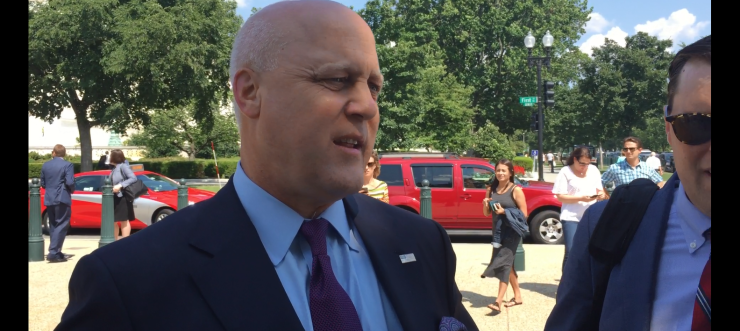President Joe Biden urged counties to use their pandemic relief funds to hire more government workers and train them for the coming infrastructure boom.
“The Bipartisan Infrastructure Law is going to create several million jobs,” Biden said Tuesday at the National Association of Counties 2022 legislative conference. “Now is the time for the counties to get ready. You can use the resources from the American Rescue Plan now."
ARPA funds "can help each of you build a strong workforce to take on these infrastructure jobs so more families can deal themselves in to take advantage of this booming economy.”
The American Rescue Plan Act,
Of that, Treasury has distributed $245 billion since May 2021, Jacob Leibenluft from the Department of Treasury, told county officials. The law included $65 billion for counties, with the first tranche also sent out last year, he said. ARPA funds need to be obligated by December 2024 and spent by December 2026.

Biden’s two senior advisors responsible for implementing the Infrastructure Investment and Jobs Act, Mitch Landrieu and Gene Sperling, also encouraged county officials to tap ARPA funds for workforce training.
“We know you have a lot of demand on those funds, but we need to focus to get this right,” Landrieu said during his speech. “The workforce piece is critical.”
Treasury’s final ARPA rule,
“It’s a national challenge and it’s important for the economy and the entirety of the American Rescue Plan that we see each county doing what it can for workers and for our workforce,” Sperling said. “I want to press whether [counties] can do more,” he added. “Are we doing everything we can with the ARP to ensure that we retaining and bringing back more workers?”
The final rule allows funds to be used for payroll and benefits for full-time equivalent employees up to 7.5% above its pre-pandemic employment baseline. State and local government employment remains well below its pre-2007 numbers, Sperling said.
“You know $1.2 trillion is coming down the pike, and you know that’s going to create demand for a workforce, for a diverse workforce,” he said. “The time to start is not when the first check arrives, the time to start is now.”
Separately, counties should start considering how they want to spend their share of the $43 billion of drinking and wastewater funds in the IIJA, said Janet McCabe, deputy administrator for the Environmental Protection Agency.
Most will flow through state revolving funds but the money includes $21 billion in grants or forgivable loans for underserved communities, McCabe said.
States are expected to submit their plans to the EPA within the next several months, McCabe said.
“We’re expecting implementation plans from the states in the fall,” McCabe said. “The goal will be to get the money out to them as quickly as possible.”





